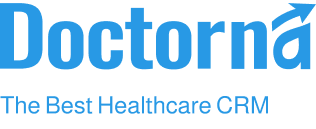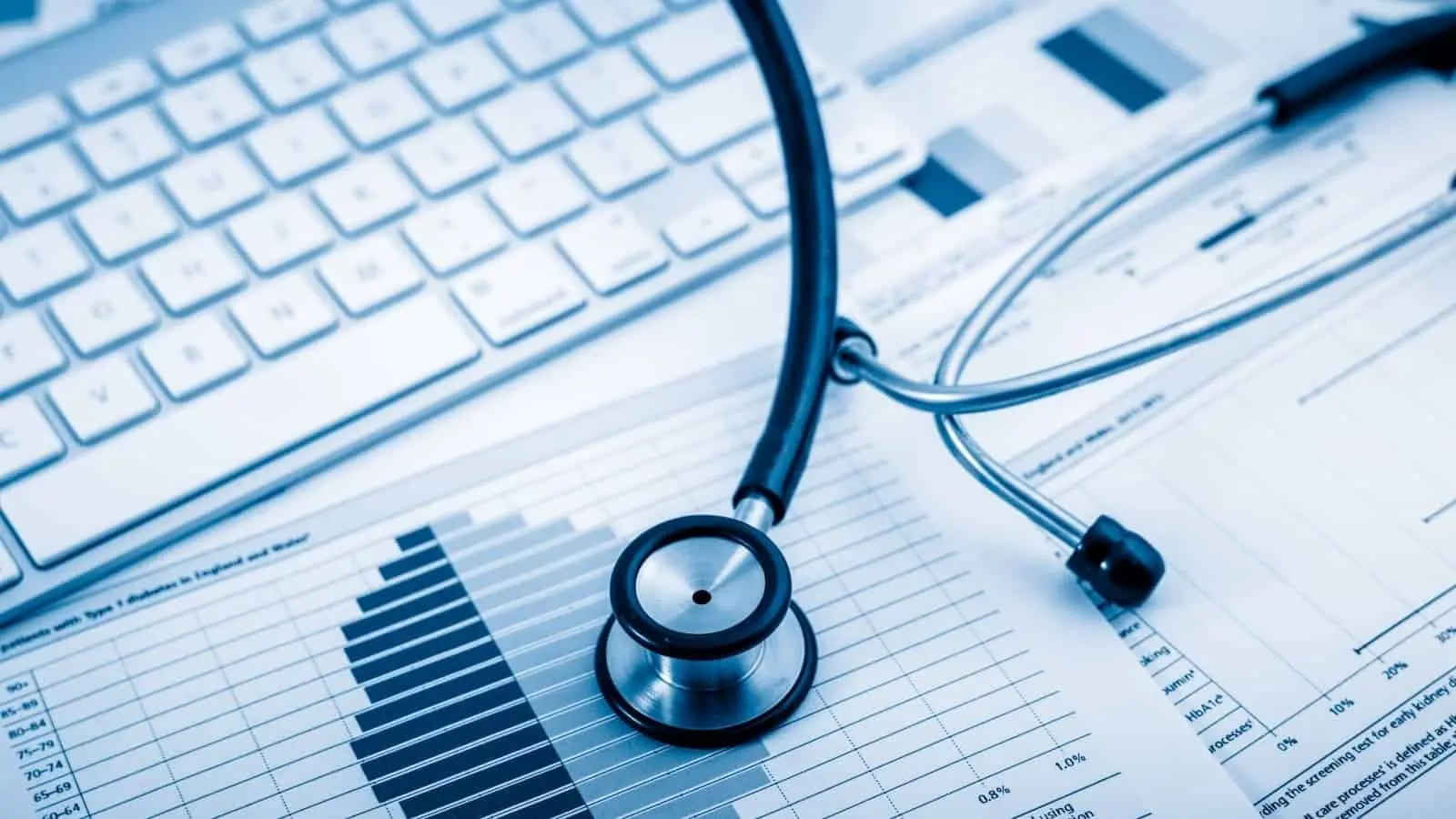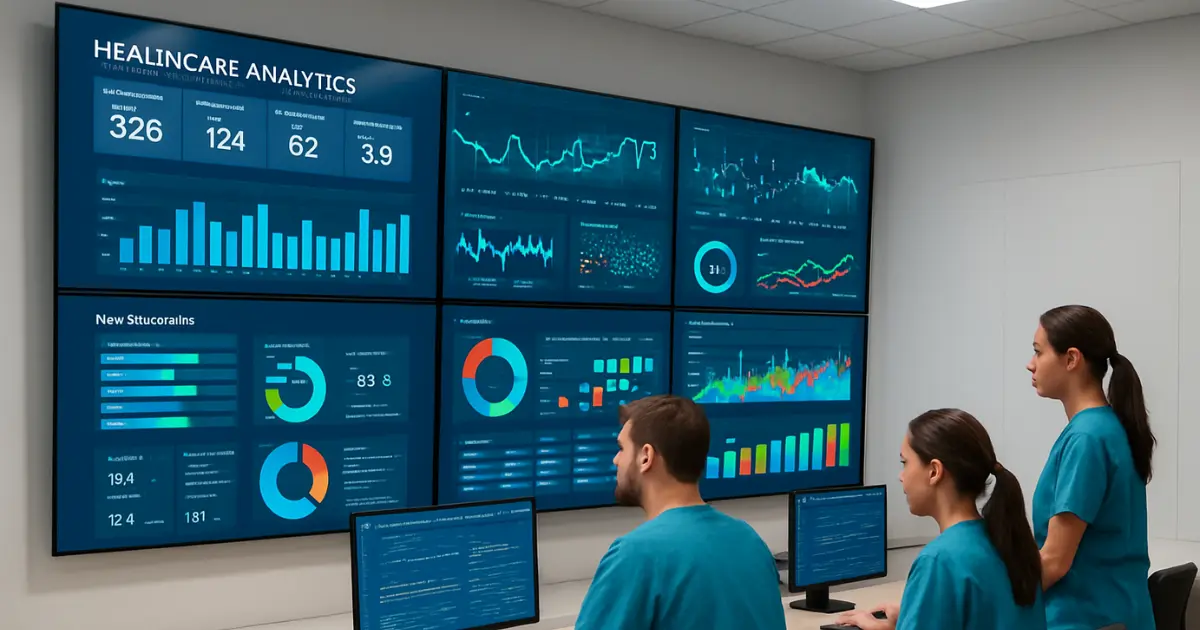Key Challenges in Revenue Cycle Management
Before we understand how healthcare CRMs improve revenue cycle management, we must first learn the challenges in it. Following are the few crucial hurdles in RCM:
- Billing and Coding Errors: One of the most common challenges in revenue cycle management is billing and coding errors. According to recent statistics, 80% of medical bills in the US contains errors. Such mistakes can be costly for patients and healthcare providers alike.
For instance, The Healthcare Financial Management Association reports hospitals lose 3-5% of their annual revenue each year due to inaccurate coding and insufficient clinical documentation.
Additionally, it’s estimated that doctors in the U.S leave nearly $125 billion every year because of poor billing and coding practices. Apart from the hefty loses, billing and coding errors can also cause claim denials, compliance risks, and administrative overload. - Claim Denials and Rejections: Denial and rejection of claims are significant obstacles that hinder a steady revenue flow. Common causes include, incomplete documentation and failure to appeal denials.
According to a recent survey from Experian Health, three out of four healthcare providers say claim denials are increasing. Not only does claim denials increase administrative burden, it also comes with a heavy price tag. It’s estimated that hospitals and health systems nearly spend $20 billion per year to fight denied claims. - Inefficient Patient Data Management: Fragmented data management can lead to inefficiencies like inaccurate billing and data silos. The IDC Market Research states that companies can lose up to 30% in revenue due to incorrect or siloed data.
- Limited Use of Automation and Technology: Despite the tremendous technological advancements, many healthcare providers still rely on outdated technology which hinders their efficiency drastically.
A recent news article stated that one of the major contributors to claim denials is using outdated technology. The report also stated that many healthcare organizations still rely on legacy systems that fail to integrate with EHR records and payer platforms. This failed integration leads data silos and real-time processing of claims. - Insurance Verification Issues: Errors in identifying patient insurance verification cause create significant delays and loses.
- Regulatory and Compliance Challenges: Regularly keeping up with the evolving industry standards can strain the revenue cycle. Moreover, non-adherence can result in heavy fines and penalties.
In a nutshell, there are several challenges that disrupt a steady revenue cycle. Let’s now look at how healthcare CRM systems address these issues.
How Healthcare CRM Systems Tackle Revenue Cycle Management Challenges
Medical CRM solutions are transforming revenue cycle management by tackling their biggest bottlenecks. Below is a detailed explanation on how each challenge is addressed:
- Tackling Billing and Coding Errors: Healthcare CRM systems significantly improve billing and coding errors by centralizing patient data and integrating with billing and coding workflows. This integration ensures healthcare providers receive accurate and complete patient information, thereby minimizing errors.
Additionally, automated validation features within CRM solutions cross-check documentation and flag any discrepancies before claims are submitted. Finally, CRM-EHR integration guarantees that billing department have access to updated information needed for precise claim processing. - Reducing Claim Denials and Rejections: As aforementioned, CRM solutions reduce claim denials and rejections by detecting errors in claim documentation or coding. These systems also streamline the appeals process, provide tracking and management features to address rejected claims promptly.
- Enhancing Patient Data Management: The major advantage of healthcare CRM systems is its ability to consolidate information from several touchpoints into a unified platform.
This enhanced centralization eliminates data silos, ensuring all departments have access to recent and accurate records. Features like automated data entry and validation processes further enhance data accuracy by reducing manual input errors. - Streamlining Insurance Verification: Insurance verification is a complex process and healthcare CRMs simplifies it by automating eligibility checks during patient registration. These early check-ins ensure coverage details are confirmed and prevent delays or denials.
The system also providers alerts for treatments requiring preauthorization, enabling staff to address proactively. Moreover, CRM platforms regularly update payer policies, ensuring staff are updated with the latest information to avoid any delays. - Ensuring Regulatory Compliance: Healthcare CRMs are designed to comply with regulatory standards, thereby reducing the risk of penalties and legal challenges.
As you can see, healthcare CRMs is a valuable tool that not only enhances operational efficiency, but also efficiently streamlines revenue cycle.
How to Implement Healthcare CRM for RCM
Implementing healthcare CRM solutions for RCM requires careful and strategic approach. The following steps outline how healthcare organizations can seamlessly implement healthcare CRM systems:
- Assess Organizational Goals
First, assess your present state of RCM processes, and find out what needs to be improved. Analyze the pain points: frequent billing errors, claim denials, delayed payments, or dissatisfied patients.
Engage various stakeholders from different departments, including billing, administration, and IT, for the best understanding of organizational needs. This will guide you toward selecting a CRM system that meets your goals. - Define Objectives and KPIs
Clearly outline the goals of implementing the Healthcare CRM system, say, reducing the rate of denied claims, reduction of the payment cycle, enhancement of patient communication, or data integrity.
Second, identify what the KPIs should be for measuring those objectives, such as a reduction in billing errors, increased revenue collection, or higher scores in patient satisfaction. - Select the Right CRM Solution
Choose the Healthcare CRM platform which works for your organization. Here’s what to look out for in systems
[i] Integration with existing tools like EHRs, billing software, and insurance portals
[ii] automation features to handle tasks related to billing, payment reminders, and reporting
[iii] analytics and reporting to tease out the performance of RCM
[iv] User-friendly interfaces to ensure staff adoption. Consider scalability and vendor support to ensure the system will grow with your organization and provide ongoing assistance. - Plan Integration with Existing Software
For the implementation of CRM, effective integration with your current technology stack is required. Engage your IT department and CRM provider in laying down a comprehensive integration strategy; this will ensure smooth data flow across the CRM, EHR, billing system, and other software. Data migration should be well-planned to avoid errors or loss of crucial information. - Provide Comprehensive Training
Train your staff on how to use the new CRM system. Arrange for training for the different user groups: front-office staff, billing teams, and administrators. Emphasize the benefit to be derived from the CRM by them, such as workload reduction and better engagement of the patients, to overcome their resistance to adoption. - Customize CRM for RCM Workflows
Customize the CRM system to your organizational RCM workflows. Customize the following: [1] The automation of billing processes [2] Schedules of payment reminders [3] Claims management dashboards [4] Patient communication templates. Because it is tailored, the CRM will address your unique challenges and optimize workflow. - Test the System Thoroughly
Before full deployment, do thorough testing to uncover and resolve issues. Pilot programs in select departments or locations should be run to test how well the CRM integrates with business processes. During this phase, user feedback must be collected also to refine the system and iron out technical and operational issues. - Deploy the CRM System
Once the testing is complete, begin a phased rollout of the CRM system within the organization. This way, it minimizes disruptions in the process, and whatever adjustments are necessary can be made based on feedback. Ensure that during this deployment phase, support from the vendor is available to help deal with unexpected problems. - Monitor Performance and Optimize
Monitoring and Optimizing Performance Once implemented, continuously monitor the performance of the CRM system by using those KPIs identified in this approach.
Avail yourself of analytics and reporting functionality that provide workflow efficiency metrics, payment trends, and metrics for engagement at the patient level.
Periodically review this set of insights for the purpose of making further opportunities to improve such that the system remains in line with emerging organizational requirements. - Ensure Ongoing Support
Ongoing Support and Upgrades For long-term optimization of the CRM system, include a maintenance and support strategy, with continuous upgrades.
The system should always be current with features and regulatory compliance issues. Refresh training among staff where necessary, and address any technical issues immediately.
Implementing a healthcare CRM system for revenue cycle management isn’t just about adopting new technology—it’s about transforming the way your organization manages patient financial interactions.
By approaching CRM implementation with a clear roadmap, tailored workflows, and proper training, providers can ensure a smooth transition that drives real results.
With careful planning, phased deployment, and ongoing optimization, your CRM can evolve into a powerful engine for financial growth, operational efficiency, and improved patient satisfaction.
The Future of RCM Lies in CRM Integration
In an era where financial efficiency is as critical as quality care, healthcare CRM systems emerge as a transformative force in revenue cycle management.
By addressing long-standing challenges—ranging from billing errors and claim denials to fragmented data and outdated systems—CRMs streamline workflows, enhance accuracy, and drive faster reimbursements. More importantly, they create a connected ecosystem where providers, patients, and payers communicate efficiently and effectively.
A well-implemented healthcare CRM system not only strengthens operational performance but also enhances the patient experience, boosts staff productivity, and significantly increases revenue outcomes. When used strategically, it becomes much more than a software—it becomes a critical partner in financial and clinical success







